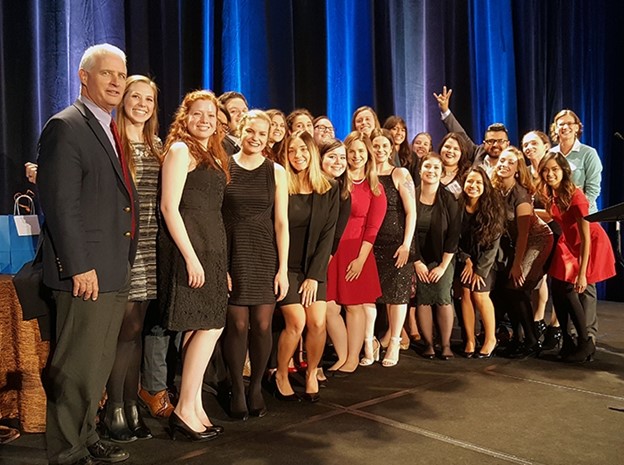Research and recommendations for effective, day-to-day nonprofit practice from ASU faculty, staff, students, and the nonprofit and philanthropic community.
Volunteer retention is important in nonprofits because many nonprofits rely on volunteers to provide services. It is an issue in both large and small organizations because no matter the size, nonprofits rely on volunteers to carry out their mission. Volunteer retention is the ability to keep volunteers involved in an organization. Retention of volunteers comes from a fulfilled commitment and the hope that they will renew that commitment to the nonprofit.
Focus more on retention than recruiting
Volunteer retention is an important aspect of a nonprofit because nonprofits spend tons of money on marketing, recruiting, training, and replacing volunteers (Jamison, 2003, p.115). If nonprofits can increase volunteer retention, they can use the money they would otherwise spend to market and recruit for volunteer positions towards further training and development of volunteers and staff, thereby decreasing volunteer turnover. Volunteer retention improves if an organization focuses on what motivates a volunteer and builds volunteer management programs and appreciation experiences around those motivations.
Despite the large number of volunteers in human service nonprofits, there is a high level of dissatisfaction with the volunteer experience. Jamison (2003) found that 40% of volunteers were dissatisfied with how they are managed and only 20% were pleased with how…
Read more
Just days after we rang in the new year, a storm blew through Denver, Colorado. While the flakes fell outside, inside there was a flurry of ideas, conversation, and learning at the Nonprofit Leadership Alliance's Alliance Management Institute (AMI). Twenty-two students from the ASU Nonprofit Leadership Alliance Student Association joined hundreds of the brightest future nonprofit professionals from 33 campuses across the country. Our students engaged in three days of workshops and brainstorming sessions across a wide variety of topics, including: leveraging social entrepreneurship, organizing grassroots social movements, and building strategic partnerships.

One particularly proud moment for the ASU delegation was cheering for junior Lindsay Zapata as she presented her Undergraduate Best Practices…
Read moreWhat criteria should nonprofits consider before accepting a social impact investment?
Recent trends in philanthropic giving indicate that the new generation of donors has a high interest in ensuring that their donations generate outcomes (Flandez, 2012). Donors are becoming increasingly vigilant and have rising expectations of nonprofit agencies. As a result, an emerging method of investment, called social impact investment, has investors monitor the outcomes produced by their donations while simultaneously producing profit from their investment. Nonprofit executives must be cognizant of these trends, as they may provide insight into the motivations for giving. They may be some useful considerations for nonprofits to consider in order to boost their finances and maintain their donor base. At the same time, nonprofits should be aware of the challenges and limitations to this emergent form of funding.
The Nonprofit Finance Fund defines social impact investments as “investments that intend to generate positive social or environmental impact along with financial return.” Though the practice is decades old, the term was only coined in 2008, making it a relatively new field of study. Despite its recent emergence, it has gained rapid popularity, with an estimated $300 billion in impact investments in 2014, and an estimated $500 billion expected by 2019 (Sirull, 2015; Monitor Institute, 2009, p. 5).
Read moreAs nonprofit leaders, we’re paranoid that our funding will suddenly dissipate. We obsess about the grants that won’t fund and the donors that will move away.
The bread-and-butter funding that enables our work may dissipate due to any number of external factors. An election cycle, a bad day for the stock market, a poorly attended gala, and even an extended vacation by a wealthy donor can raise our blood pressure and force programmatic cutbacks.
So why do we think we’re different from anyone else?
Most families and businesses are one bad month away from crisis. Nonprofits are no exception. The difference is that nonprofits have learned the incorrect lesson that more money is always available so long as we do more fundraisers. Nonprofits have learned to diversify revenue largely as a response to mid-20th century funding patterns. Our paranoia about losing our funding has led us down a bad path toward over-diversification as a fiscal strategy.
Herein lies the problem. Diversification is not a strategy - it’s an investment. And investments are risks.
Revenue diversification is just not affordable for every organization. In theory, an organization can resist economic shocks by spreading out its income sources from a mixture of grants, donations, fees, corporate gifts, social enterprise, and special events.
Most nonprofits can’t manage all those different funding sources. When nonprofits attempt to…
Read moreWelcome to a new ASU Lodestar Center Blog series, “Get to Know the Lodestar Center!” We’d like to provide our readers with a peek into what we do each day to accomplish our mission by introducing members of the faculty and staff via short interviews and conversations. Meet the folks who are here to help you and your nonprofit succeed!
Elsbeth Pollack is a Program Manager for Public Allies Arizona (PAAZ), an AmeriCorps program that engages service-minded young individuals in 10 months of paid leadership training, apprenticeships, and service opportunities in collaboration with local nonprofit partner organizations.
PAAZ's mission is to create a just and equitable society and the diverse leadership to sustain it. Public Allies' citizen-centered, values-based approach to leadership has created pathways for young people to engage in their communities, and has helped communities and organizations tap the energy, passion, and perspectives of a new generation. The leadership development programming challenges and supports Allies to become leaders who connect across social boundaries, facilitate collaborative action, recognize and mobilize community assets, commit to continuous learning and self-development, and are accountable for creating impact.
Meet Elsbeth...
How would you describe yourself in 5-10 words?
A community-focused listener, connector…
Read more